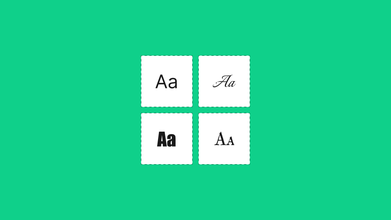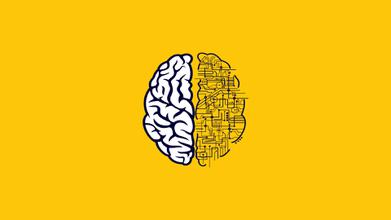Learning Front-End - Image to HTML Conversion Process
Apr 01, 2020 4364 seen
As a beginner, you may wonder which area of web development to pursue. If you are already sure about front-end development, keep on reading this article, for here you can find some essential information about learning front-end and Image to HTML conversion process, which was employed in the purpose of the Fronty AI. When starting out in front-end, you may not be certain where and how to start. There are a number of options available not only programming language-wise but frameworks, regarding tools, as well as technologies.
Learn HTML and CSS
Front-end web development is also known as client-side development and this is the practice of producing HTML, CSS and also JavaScript for a website or Web Application so that a user can see and interact with them immediately. The challenge associated with front-end development is that the techniques and tools used to create the front-end of a website change constantly so the developer needs regular researches and needs to be aware of how the field is developing.
There are all kinds of different online courses available on how to get started with and how to learn HTML and CSS. First things first. Sign up at Online courses like Coursera or Team Treehouse. After finishing some initial courses, go ahead and create some static web pages and repeat them over and over again. We also recommend developing some small UI elements for practicing your newly learned HTML & CSS skills. Codepen.io is another great platform for that. Browse other people’s projects and participate in the community there.
Creating a Real Landing Page or Website
Playing around with UI elements is one thing. Creating an actual landing page or website is something different. At some point, you will eventually start using JavaScript snippets. Don’t forget to challenge yourself by building the first responsive elements. So there’s only one way to becoming better at what you’re doing: Keep learning, keep building. Putting these two together, build to learn! There’s no better way to learn than to get your hands dirty. You’ve probably heard this a hundred times by now, but it is for a good reason why this is the advice most often dished out.
Note: Your reading skills greatly influence your path to becoming a great front-end developer. Especially when starting out, there’s a lot of reading required. Why? At first, you’ll probably read a lot of articles, guides, and manuals on how to do different things. You’ll also start reading other people’s code.
Building Website is a Small Part of the Front-End Puzzle
Knowing how to build a website is a small part of the front-end puzzle. We are so sorry if that sounds demotivating. But that’s actually the case. There is a whole load of topics that you still should learn about. If we consider performance, testing, QA and many other areas, then you really need to become a deep diver as a front-end developer.
Find Your Tools - As you start your journey with front-end development, you will need to decide on your toolkit and the services you need to make your life easier. Learning about the different tooling options is an important thing. Great tools will help you enhance and automate your front-end development workflow. There will be an ocean of possibilities but soon enough, you’ll find yourself using certain tools and apps. One of those tools will definitely be the Chrome developer tools. Why? Because you can play with HTML, CSS, and JavaScript in real-time and this will give you the immediate feedback you need to learn quickly. Additionally, node, npm, bower and many more excellent tools are there to facilitate your daily work. And don’t forget about versioning.
Study Frameworks
It is time to study frameworks and get involved with them. Start by looking at the more popular ones and work out for yourself why they do things in a certain way. Figure out whether each one is a good thing. Understand how frameworks and industry standards have changed over the last couple of years. Looking at older frameworks, you will probably discover approaches and code which are now obsolete. Do not forget: Sometimes, using a framework isn’t the best option, but most of the time it’s well worth knowing about them.
Don’t shy away from big frameworks that seem well established. Even framework authors make mistakes. You may be spending most of your time reading code but don’t see it as a waste of time. You will pick up good habits and practices along the way and will gain some experience working with other developers. When you feel ready to write some code, go through issues on the repository and pick one problem which is manageable for you. Getting involved with various projects, especially open-source, will not only make you a better front-end developer, but it will also help you build up your very own online brand as an active, experienced developer.
The path to becoming a front-end developer will definitely take some time. As presented in this blog post, becoming a front-end developer is not only about learning various front-end frameworks and programming languages. It’s about the interaction, responsibilities, and roles of a front-end developer. Because the web is a rapidly evolving universe, great front-end developers should never stop learning. Even little things like following front-end experts on twitter will have an impact on your learning curve. You need to have some patience to get there. Rushing doesn’t make sense because it won’t make you happy. Never forget to have fun while learning and experimenting.
Fronty's Image to HTML Conversion Process
Now it is time to expand the front-end sphere into the practice of how we get Fronty's source codes, as well as its image to HTML conversion process.
The process of implementing a client-side software is based on Artificial Intelligence (AI) generating codes from a mockup. Our AI detects the different types of sections on the image (e.g. navbar, header, footer). Besides section is detects almost all kinds of elements and their styles (e.g texts, images). Based on that data creates the main layout of the webpage and generates HTML/CSS code.
The Convolutional and Recurrent Neural Networks and Deep Learning take a screenshot as an input and generate HTML CSS as an output. Most of the AI technologies we’ve implemented and trained are pending to patent, that’s why we can’t dive deep into the details.
The main AI which is equipped with a CNN special network - is able to detect both objects and objects’ styles on the JPG or PNG image. This allows us not to be limited only with Photoshop or Sketch or any design-applications. So any JPG file is accepted - even users can take screenshots of existing websites. Through deep learning methods we leveraged to train an AI with up to 90-92% of accuracy.


